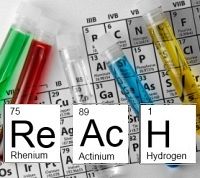

EC Regulation 1907/2006, on the Registration, Evaluation, Authorisation and Restriction of Chemicals (REACH) has finally been published, and will come into force on 1 June 2007. It aims to make those who manufacture, market and use chemicals responsible for understanding and managing their associated risks. It is regarded as the most important piece of EU legislation for 20 years and is the strictest law regulating some 30,000 toxic chemicals present in the EU to date. It replaces a patchwork of Directives with a single system.
There is a requirement to collect, collate and submit data to the newly established European Chemicals Agency, on the hazardous properties of all substances (except polymers and non-isolated intermediates) manufactured or imported into the EU, in quantities above 1 tonne per year. They must also be tested for health and safety and environmental purposes and registered with the Agency.
Registration must be by:
The marketing or use of substances considered of a very high concern to health or the environment, regardless of their volume, must be authorised by the European Chemicals Agency. This applies to substances that are:
The European Chemicals Agency will act as the central point for REACH, and will run the databases necessary to operate the system, co-ordinate the in-depth evaluation of suspicious chemicals and run a public database in which consumers and professionals can find hazard information.
The Regulation also calls for the progressive substitution of the most dangerous chemicals when suitable alternatives have been identified. This was one of the most contentious elements of the legislation, causing much debate.